







Welcome to 2023, and another year of fis It seems 2022, was a somewhat disrupted y took some time to remember what fishing wa Disruptedtosuchanextentthatmy3yearfis expired, and I received no correpsondence fr that it was about to Turns out I had a mon registered fishing, but after 2 years of lockd feel robbed. Anyways....
Another year and another newsletter. Of tomakemylifemoredifficultanotherde k software being explored. I've declared Free Open Source Software (FOSS), s will now be produced on Scribus H curve, but was forced to do so as my 2 started showing its age. So Santa got m Carbon, and I'm geeking out learning least while the weather is either too h ever be too hot?)
ere may be a bit of a settling in odd photo crop or mangled font, and there is no spell checker so shoutout the errant typo or inappropriately pla 2023 begins my seventh year with five in covid years), and moving into m Tenkara rods only. I know Neil Vincet case,(blesshisintrepidreporter'sheart) to all and sundry why I eschew all th um, a reel, and cast a fixed line I expe this year I'll put pixel to screen and tr all to the zen like simplicity of fix
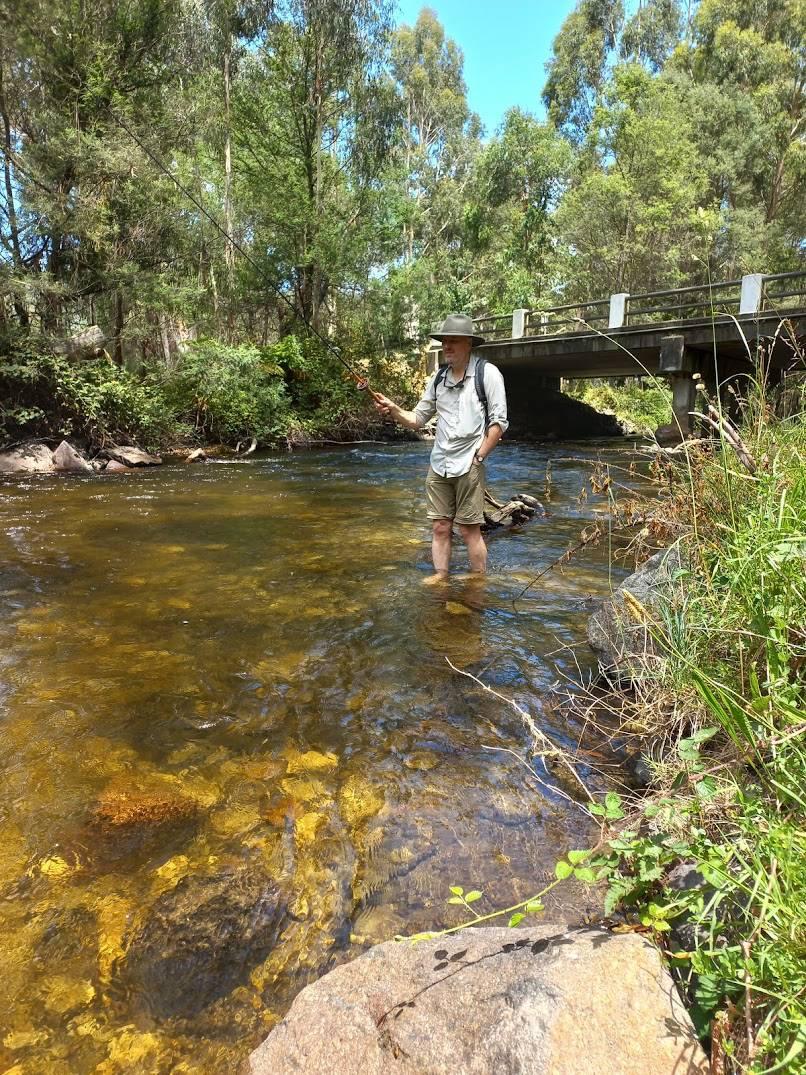
But I will spare you all for now.
Please remember, as I always write h of this newsletter is in the stories please email me directly anything you olddotmagpieatgmaildotcom
Tight Lines to you a
Andrew Rodda

Happy New Year Red Taggers. ting this from the chilly UK where it’s gone ng unseasonably warm to snow and then degrees overnight. Fishing is not on the ut we did stay in Alnwick, Northumbria for It took me a day to realise that this is the Hardy, the renowned tackle manufacturer ntly celebrated 150 years in the business. sit to the store and museum was obligatory. to say I walked very quickly through the ch was akin to Harrods and up the stairs to um which boasts some very interesting and e exhibits I will be donating their latest and information leaflet to the club library with a DVD e Lost World of Mr Hardy worth a watch. Back in the store I chatted alesman who didn’t try and sell me anything t pains to point out that fly fishing in the n ’ t have to be expensive. He pays GBP80 a h a stretch of the River Alne. Still sounds butnotbyUKstandards.Northumberland t populated county in the UK and has many trout, sea trout and salmon It reminded ppsland with farmland stretching down to ne coast line Although the castles were
s closer to home look out for the Ultimate xpo on February 1819. e CVFFC and secured a stand and Red Tag is planning presence there together with other clubs eed volunteers to help out and demonstrate shing is such a terrific past time and why s the best club to do it with. So please keep t for the relevant email.
shestoyouallforsomegreatfishingin2023
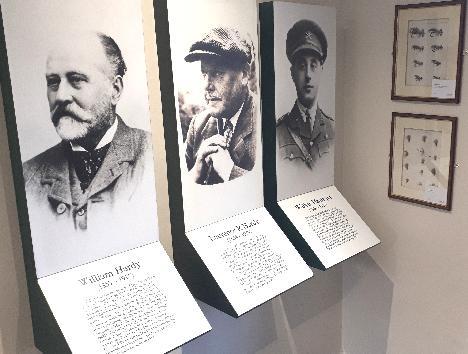

DAVID HONEYBONE
 Red Tag's new proposed dress code?
Red Tag's new proposed dress code?

President: David Honeybone
Vice President: Vin McCaughey
Secretary & Public Officer: Bill Jackson
Newsletter Editor: Andrew Rodda
Treasurer: Don Amour
Committee Members
Paul Burgess
David Fulton
Frank Groenveld
Owen Macdonald
Stuart Murphy
Marshall Pardee
Tony Ryan
Barney Stephens
MichaelAlderman,FayeMargarson,RichardAllum,DonaldAmour,KeithAnderson,StewartAnderson, Leff Andropof, Jamie Bailey, Michael Balfour, Les Bannister, Peter Blackmore, Craig Bolch, Geoff Bond, Steve Brown, Paul Burgess, Jeanette Butler, Malcolm Caldwell, Charles Carabott, Donna Cardwell, John Carrington, Tony Casey, Grant Chisnall, Allan Choat, Cameron Clarke, Brian Cocks, Peter Coles, Dean Constable, Adam Corey, Sam Cox, Malcolm Cunningham, Neil Cunningham, Michael Daffern, Blake Davis, Matt De Cler, Sam Dempster, Adriaan Den Dulk, Russell Dodds, Barry Dovey, Ezra Dowling, Niki Duckstein, Sean Ehlert, Andy Elam, Giovanni Finazzi, John Foy, Peter Fraser, David Fulton, John Gibbins, Ian Gould, Robert Gocentas, Garry Greene, Phil Grimwood, Frank Groeneveld, Peter Hanfeld, James Hanover, Colin Harris, Justin Hayden, Robert Hodder, Stephen Hodder, David Honeybone, Geoff Hughes, Sam Humffray, Bill Jackson, Graeme Jonson, Janie Joseph, James Kane, Sanjiv Karunajeewa, Bernard Keegan, Brian Kenthughes, Adam Kidd, Colin Kirpatrick, Michael Kretschmer, Ralph Leslie, Stephen Lohning, Colin Low, Ken Lucas, Owen Macdonald, Dan Mamrot, Ed Mamrot, Vin McCaughey, Stephen McCormick, Allen McMillan, Roger McNeight, Peter Megens, Michael Carl Sarah & family, David Miller, Ian Mitchell, Grant Mockunas, Tony Mockunas, Moisis Moisis, Ian Morgan, Mark & Sarah Morris, Stuart Murphy, Len Murray, Geoff Newman, Michael Nolan, Todd O'brien, Eammon O'leary, Marshall Pardee, Nigel Parker, Chris Petersen, Ron Reeves, Andrew Rodda, Peter Roselt, Tony Ryan, Leon Salisbury, Suveshan Sathurayar, Henry Schreier, Declam Schultz, Timothy Shannon, Neil Sharkey, Kevin Sharp, Rupert Sherwood, Dennis Smart, Tony Smith, Tim Spearman, Barney Stephens, Roger Summers, Bob Symons, Bert Torresi, John Trengove, John Trioli, Anthony Urban, Piers Van den berg, Zoran Vasic, Neil Vincett, Colin Waddell, Marianne & Steve Wallace, Zak Warden, Hamish Webb, Barry Whelan, David Williamson, Matthew Woliansky, Mark Woolley, Alex Xuereb, Chris Zimmermann
If I've misspelled or missed someone, please email me, the list is cut from a spreadsheet.
Hello fellow fly fishers., I hope everything is going well in Australia and fly fishers are enjoying some fishing after a few years of uncertainty with lockdowns etc with Covid 19
I am a professional NZ fishing guide and the last 3 years have been testing to say the least. With 95% of my clients coming from overseas, business has been tough but , on the positive side, bookings are now coming in steadily and life is gradually getting back to normal.
Fishing this winter in the central area of the North Island (Taupo area), has been fantastic I have had several Australian clients over already and the Americans are coming over now as well with February 2023 booked out

Prior to the winter runs we had a long hot summer which brought the wilderness rivers into play. is is a great time to fish when the dry fly becomes another option, the sun is on your back and some very large fish can be caught in waters that are closed to fishing in the winter months.
In May of this year I caught a 10 pound trout (4 5 kg) as seen in the photo supplied, in one of the wilderness rivers close to the Taupo area ere was quite a story to tell about it as well I had invited a longtime English client to join me for a day’s fishing at one of these wilderness rivers
e river I had chosen was notorious for big fish and my thought process was to get him a big fish before he left to go back to the UK
I found this great stretch of water that had produced well for me in the past. It was a turbulent, bouldery run, just the sort of place that a big fish would hold up.
We both started fishing close to each other and I soon caught a nice rainbow of around 4lb About half an hour laterIwashardintoanotherfish,thistimeaveryattractive brownie which went about 5 pounds I thought at this stage I would have to change positions with my English colleague as the fish seemed to be hanging around my area. We changed positions and I showed him exactly where to cast and I went into his previous position and casted. Immediately I was hooked up right where he was and this fish was big, very big
As it was impossible to follow the fish downstream (the terrain wouldn’t allow it), I had to ask my fellow fisher to abandon his fishing and take up a position downstream with a landing net and hopefully I could steer the fish into him.
Fortunatelyeverythingwenttoplanandthefishbehaved itself While the Englishman was a bit disappointed that he didn’t hook the fish he was more than happy to be part of the experience He had simply never seen a a fish of that size Ironically I was to hook up again in the same place again on the very next cast.
It wasn ’ t to be the Englishman’s day on this river but he was to have some good action on the mightyTongariro River the following day
roughout the winter the Taupo rivers have all fished very well with no clear favourites although some weeks some have fished better than others.
I had a group of 3 Australians at the tail end of the winter runs in the Tongariro River in September for 3 days ey were all surgeons and quite accomplished fly fishermen OnthefirstdayIestimated40fishwerehooked and all in the same reach
I was netting another fish at the time and had to cease my services to pull this man out. As he was around 20
stone this was no easy task but it’s amazing what you can achieve when, quite simply, you have to What made matters worse was that it was a bitterly cold day with fresh snow on the surrounding hills. We were experiencing a cold polar blast straight up from Antartica that was to hand around for the 3 days they were fishing but this was notanissueasthefishingthroughoutthe4dayswassuperb.
I had another group of 3 Australians in May that also had great success both in the Taupo area and in the wilderness rivers close by with some big fish caught As a bonus I took them all out to a small stream mouth one night to try and catch some good fish and maybe some browns (always a possibility at this time of year and on a dark night).
As this was a bonus trip I elected to fish with them e fishing was not fast and furious and even though it was heavily overcast there was a full moon present behind the clouds and the night was not as dark as I would have liked. A few fish were caught however and I managed to cap it off by catching a superb 8lb brown.
SoifyouarelookingtocomeovertoNZforthesummer I predict more of the same with excellent condition fish and good numbers All fishing methods have their place and will excellent at different times
If you want to experience the Central North Island fishing experience, feel free to contact me, Brian Willson, Professional fishing guide, NZPFGA member, +64 21 667867 anytime. Cheers and tight lines,


Meet Fellow Red Tagger – Ian Mitchell
I said to Andrew Rodda that I was going to interviewIan,for the newsletter andIanvery kindly offered to go fishing with me afterwards Andrew replied with "Half your luck!"(Ed: and meant it!)
So off I went to Buxton and the beautiful Steavenson to meet Ian at his lovely property . (I've got to say this writing gig is a damb sight better than many others I have had over the years).
Ian is an electrical engineer and his day job is as a Project manager in the IT Industry He has been at it for about 34 years. He does a lot of work doing computer upgrades for companies and in this day and age I guess he would never be short of work.
I was aware that he does some flyfishing guiding work in his spare time and it baffles me a bit how he finds the time He said he was very keen to help people enjoy their flyfishing and after perfecting his craft over about 28years it’s no wonder that he has a lot of knowledge to impart.
I must confess that I have a soft because, like me he was an origin turning up in Victoria with his fa a about 4 years old
After university and getting m go bait and lure fishing with his his father in law’s mate who was a thought that flyfishing caper look effective way to catch fish. He wa he was about 30 when he was given kit to give it a crack.
In 1995, one year into his flyfi was lucky enough to go to New Heandhiswifepackedupandwen
In the first few days before his wi living in a motel and spent his e the Hutt river which flows from t Upper Hutt down towards We some success, he told me, on the
an Adams. During the summer months the Hutt river is usually the domain of dogs and kayakers and he seemed to be the only fly fisherman targeting the rising brown trout Whilst most of them were smallbyNZstandardshewasveryhappyfishingaway
Over the next three years he was to discover that the Hutt river had some large trout up to 7lbs, including sea run browns in the lower reaches. During his time there he was introduced to nymph fishing, particularly sight fishing with a nymph as well as a dry dropper approach. He said he was very lucky to be able to fish the rivers and lakes in both the North and South Islands At that time he met up with a work colleague of his wife who became one of his best friends. He now lives in Rotorua, and he and Ian like to catch up for a week’s fishing each year. Ian and his wife returned to Australia in 1998 so she could complete her University degrees.
Back in Australia Ian continued to follow his passion for fishing in Australia and found he was having good success based on the techniques he had refined in New Zealand. At that time nymphing wasnotapopularfishingmethodandEuronymphing was unheard of in Australia until using bead head flies became the norm.
In 2008, his wife was offered a job in London, ith thi t h ld th b k th k d
When time permitted Ian set off fishing around the UK.
Hesaidthat,mostlythisinvolvedfishingreservoirs at Walthamstowe , near Tottenham. is reservoir consisted of concrete ponds stocked with rainbows that were best caught on Boobies on a sinking line, the schools of trout would circumnavigate the reservoir and it was a wait and see game
F l l i l i h
He also had the opportunity,while he was there, to fish the famous chalk streams, the Test and the Ichen Interestingly he said that although it was enjoyable to fish these famed places with their manicured banks and stocked trout he longed for the wild rivers of Australia and New Zealand and remarked to me that we are very fortunate to have these places at our doorstep.


During his time in Great Britain he and his wife travelled a lot and fell in love with Italy. He decide to pursue one of his life’s goals and learn a language fluently and he chose Italian. His Italian teacher directed him to the internet and the Scoula Italiana Pesca a mosca (SIM) the Italian School as a way to improve my language.
He was fortunate enough to go fishing with a couple of the people from the school and discovered, despite his ability to catch plenty of fish on a nymph,
Italians cast and fished with great success made him want to learn the Italian style. Ian embarked on a dozen courses and five years of hard work and eventually became a casting instructor with SIM. is forms the basis of how he fishes today and how heteachesadvancedcastingtechniquestothosethat have the patience and the burning desire to learn.

After a delay of eight months the time had finally come around for our NZ fishing trip, hosted by Gavin Hurley. is was a seven day trip with six full days fishing in Southland around Lumsden, aboutonehundredkilometressouthofQueenstown
We flew into Queenstown on a direct flight from Melbourne and unfortunately, we had an hour and a half delay, they had a flat tyre on the aircraft which is just what you need when you are keen to start a fishing trip. Landing in Queenstown was amazing, descending through the mountain valleys you got a perspective of the area, the scenery is breathtaking We were picked up at the airport by Trevor and Gavin and travelled to Lumsden We settled into our accommodation each of us having our own room, in what I found out was originally an aged care facility that Gavin had renovated. e accommodation was very modern and comfortable.
GavinandhiswifeDebrahostedus,andeverything was laid on Deb cooked an amazing two course meal, apart from one night, Gavin’s birthday when
they had the night off. On this night Scott, one of the guides, supplied home caught and prepared smoked salmon, venison steaks and lamb sausages so we did not go hungry Gavin was the entertainer with great impressions of how a trout reacted to a fly and also our angling styles

It was great to get to know Gavin, he is a genuine guy who likes a beer and a yarn with a very dry sense of humour.
He is a natural sledger, must have got it from his cricketing days and lets you know what he thinks of your fishing skills
Don’t take it personally, it just his way of having a laugh and once you get his sense of humour and have at laugh at your own expense and give some back you will have a great time.
Gavin got into flyfishing in his early twenties and became obsessed, after cricket it became his passion, and he was smart enough to make a career out of fly fishing. He has fished the area for over twenty five years.
(L. to R.)Owen Macdonald, Peter Fraser, Allan Choat, David Fulton, Charlie Carabott, Craig BolchEach day we split up with two anglers per guide and fished the rivers in the area. We had three local NZ guides plus Gavin, and you could not beat the knowledge they hadof the area I fishedthe Mataura between Athol and Garston on day one and four, Waikaianear Balfour day two,Matauranear Balfour day three, Toms lake and bright water on day five and Hamilton Burn near Mossburn on day six. We never went to the same place twice, there are so many places to fish it would take you months to cover all the angler accesses. e rivers run through willow lined pasture land with beautiful clear water, long glides and runs, fly fishing heaven. It was all about spotting the trout and casting a dry fly or

nymph,dependingonwhatthefishwerefeedingon.
e fishing was challenging but the guides where excellent and they managed to cater for our varied capabilities Everyone caught fish each day I had two days where the fish would not take the fly, you could see them, cast to them, but they just weren ’ t interested. en on other day managed to catch 11 all on the dry fly which was amazing. Most of the fish where 34 pounds and they pull hard, usually trying to bust you off in the undercut banks on the first run.
e highlight for me was fishing the bright water, a spring fed creek near Garston e creek only runs about five hundred meters before joining the
It wouldn't be a NZ photo without sheep, but where are the hobbits?Mataura, the water is crystal clear and filled with big trout, the fish I saw where probably 57 pounds. ere is a regular Mayfly hatch in the afternoon and lucky enough I got to experience it It is a famous fishing stream but does get a lot of pressure, so the fish are tough When the hatch was in full swing you would see multiple fish rising in a stretch gobblingdowntheemergersanddunsastheydrifted past. You had to get the fly directly in front of them about a meter upstream to eliminate any drag, they would not move side ways to take a fly and would only take what passed directly over them. To add to the difficulty once you ho k d fi h h d play it between the flowing


patches of clear water. I managed to hook two, snapping the first one off, much to Gavin’s disgust, but the second one was just bad luck with the hook pulling out Fishing a hatch is incredibly stressful, because of the intense action and you know it wont last I therefore did not fish well, my advice in this situation is to slow down, take a deep breath and focus on one fish at a time.
Another great moment was finally catching a fish after twenty minutes of changing flies. I can really vouch for my guides perseverance as I would have given up and moved on e guide was more excited h fi ll h fi h h fl
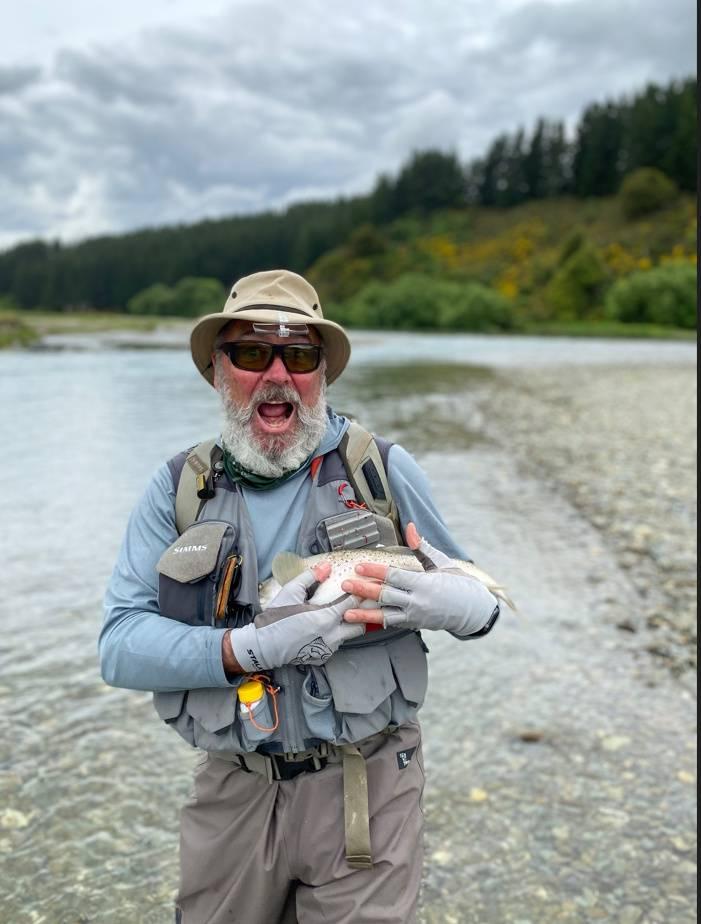
e main flies we used where size 1618 hare and copper and pheasant tail nymphs, CDC emerger, dads favourite and Adams parachute (see picture below)

We fished them as a dry dropper combination extending the length to the nymph and weight in the deeper runs. e flyoflastresortwasthesquirmywormwhich also worked well when they would not take the nymph.
According to guides the best time to fish the area is in April At this time the fish are focused on taking dry flies and the local Mayfly hatch is at its best. is Mayfly likes tohatchonwet,cold1113degCconditions. During this time multiple fish will be rising, and they will eagerly take the dry.
Iwouldthoroughlyrecommendthis trip,youwillnotgetbettervalue,being well looked after, with fantastic guides and an amazing fishery.
"is unique method of connecting the fly to the tippet is a new twist on an old knot. e spinning knot can be tied in ten seconds and, once the tippet passes through the hook eye, in total darkness. Furthermore (unlike traditional knots), the smaller the pattern, the easier it is to tie with the spinning knot. e knot, which is similar to a uniknot tied inside out, is spun or ' woven ' in the loom of the hand. For even greater strength, the tippet may be looped twice through the eye or once around the hook shank. With brief practice, the result is a swift and solid knot. e spinning knot should be tied with a smooth and continuous movement."

 Darrel Martin, FlyTying Methods 1987
Darrel Martin, FlyTying Methods 1987
Having used this knot for a while now, I thought it might be of interest to other members of the club. I hope you will find the diagrams of some help should you wish to try this knot for yourself.
read the hook and grab the tag with your left thumb and forefinger firmly and grab hold of the hook with your right thumb and forefinger.
2. Spread your fingers on your left hand a little and loop the fly on the tippet around the back of your left hand and forward between forefinger and middle finger and keep a hold of the loop and tag firmly.


3. Wrap the fly 5 times around the tippet inthepalmofyourlefthand.(Itdoesn'tmatter in which direction).
4. Continue to keep hold of the tippet and tag with your left hand and the fly with your right hand. Twist your left hand so that the tippet loop around the back of your hand is released. Closing the middle finger, ring finger and pinky together helps!


5 N ll i h h d f h l ft while continuing to grip firmly. is will close the loop.
6. Finally release the tag from between thumband forefinger and continue to pull so that the knot loosely slides along the tippet towards the eye of the hook. Continue to pull until it is snug against the eye and give the tag a tug to make sure the knot is tight.




7. When you trim off the excess tag you will notice the tag is parallel to the tippet line and not perpendicular like many other knots. e knot appears nicely tapered and not too bulky.
I have found this to be a very good knot to use in low light or with cold fingers as it does not require a lot of dexterity. It might look complicated on first appearance, but it is quite an easy knot to tie.
As with all these fly fishing knots, my preferred method of learning is while watching TV and repeatedly tying a knot until it is rote Once I can do it well in the chair I'm confident to use it on the water

“is is a guide book for those totally new to the art of tying flies. Until now, learning flytying from a book has not only been challenging, but often the cause of great frustration, with photographs or diagrams making even the elementary techniques difficult to grasp. Stepby step images help a reasonably proficient flytyer understand the stages in making a fly, but for the new beginner, there will always be a gap between each stepbystep image, which can be bewildering! Seeing the manual manoeuvres that take place in these blank spaces can make the difference between success and failure for a new beginner
Each technique and pattern in this beginners’ book has a five stage tutorial: ion on all tools, es used for each
step images to ge in great detail, d to the finished
ach
each pattern. ers ’ books, each Quick Response ntly links you to nnel and the each fly pattern. tie that pattern. ium to see any chnique at firstto tie using the m)
UPDATES/ REVIEWS/ LATEST ACQUISITIONS
DAVID HONEYBONE
ACQUISITION: THE QUIET WATERS
AYLMER TRYON
WITHERBY LTD.
1988
Memories of angling all over the world the English chalk streams, Scotland, Ireland, Norway, Iceland, South America, Australia (Tasmania and the Delatite) and New Zealand. D.H.
ACQUISITION: YOUR GUIDE TO FIS THE UPPER MURRAY
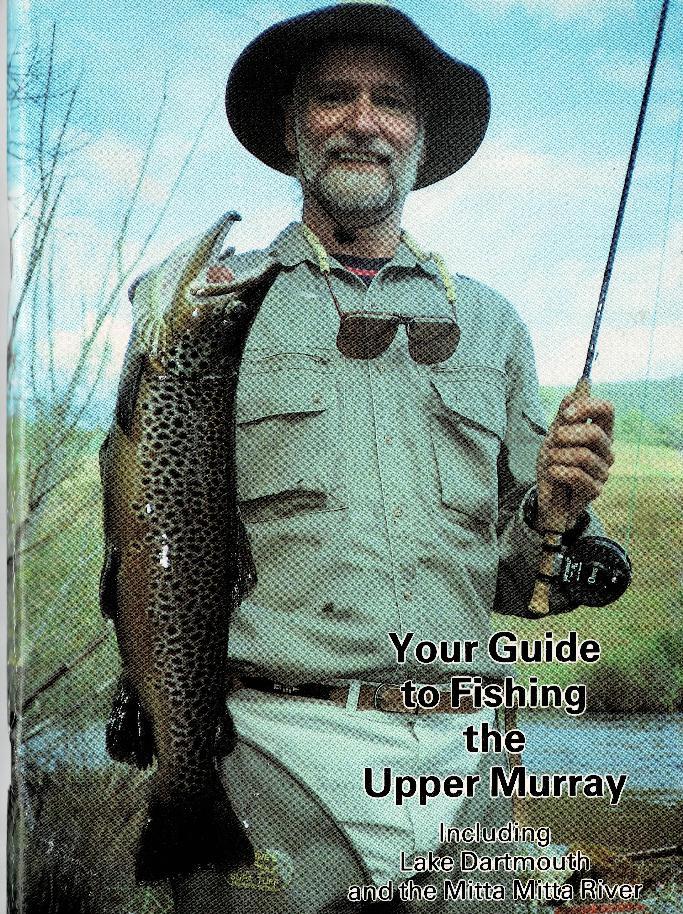
MIKE SPRY (ED.)
SPRY FLY PTY
1993
Slightly dated but still contains a w informationbymanyofthedistrict’smo anglersaboutanareafewofusgettofish to fly fishing and includes articles on t Mitta, Lake Dartmouth and fishing fo Cod D H










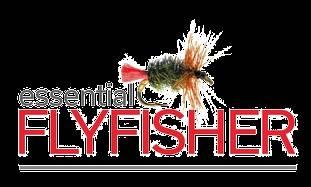
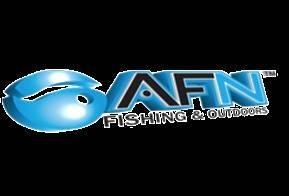
THANK YOU TO THE FOLLOWING SPONSORS FOR THEIR ONGOING SUPPORT OF THE CLUB





